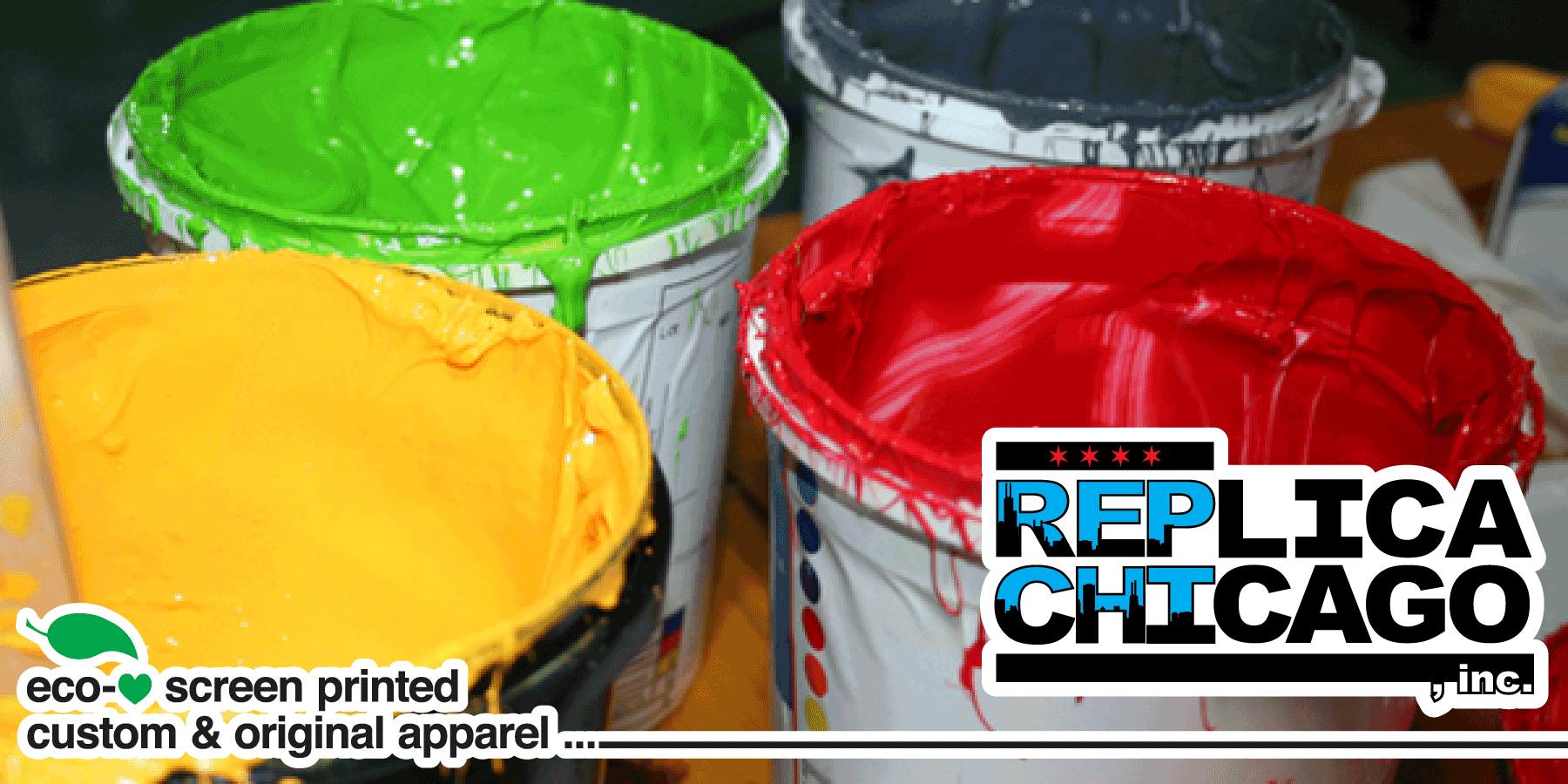Durable T-Shirt Printing for Everyday Wear
Durable T-Shirt Printing for Everyday Wear
Blog Article
Display Printing Uncovered: Whatever You Need to Learn About Tee Shirt and Garment Printing Methods
Screen printing is an interesting technique that combines art with technique, supplying limitless possibilities for creativity. Ready to check out the important components that make display publishing an art type?
The Basics of Screen Printing: Exactly How It Works
When you dive into display printing, you'll uncover it's both an art and a scientific research. At its core, display printing includes producing a stencil, or screen, that allows ink to travel through only in specific locations (screen printing kit). You start by choosing your style and preparing your screen with a light-sensitive solution. When you expose this emulsion to light, it sets, leaving your design as an unfavorable area.
Placement the display over the fabric, then make use of a squeegee to press ink with the screen onto the garment. Each action is essential, and understanding them will certainly raise your screen printing skills, changing basic garments right into unique, expressive items.
Sorts Of Screen Printing Strategies
When you comprehend the fundamentals of screen printing, it's time to check out the different techniques that can boost your layouts. One preferred technique is conventional display printing, where ink is pushed with a stenciled screen. This strategy is fantastic for bold, dynamic colors. There's water-based ink printing, which supplies a softer feeling and is environment-friendly, however it needs a different technique to healing.
Another option is plastisol printing, known for its resilience and dazzling shades, making it a favorite for lots of brand names. Experiment with halftone printing to create gradient results and elaborate styles.
Necessary Tools for Screen Printing
To accomplish stunning lead to display printing, having the right equipment is basic. You'll need a sturdy display printing frame, which holds the mesh that transfers your design onto the garment. Next off, invest in high-grade mops; these are vital for using ink evenly across the screen. You'll likewise call for a great exposure unit to produce your displays, as well as a washout booth for cleaning them after usage. A reputable warmth source, like a conveyor clothes dryer or heat press, is crucial for curing your prints to ensure durability. Do not fail to remember an appropriate work area, furnished with tables and storage for your supplies. Finally, safety gear, such as gloves and masks, will keep you risk-free from chemicals and inks. With the right devices, you'll be well on your method to producing professional-quality prints.
Selecting the Right Inks and Products
When selecting inks and products for display printing, you require to think about the kind of ink that functions finest for your task. Consider fabric compatibility to ensure your styles look last and terrific lengthy. Likewise, check out environmentally friendly ink alternatives to make your printing procedure a lot more lasting.
Sorts Of Display Inks
Selecting the right display ink is vital for achieving dynamic, resilient prints that fulfill your job's needs. There are several types of screen inks to check out. Specialty inks, such as glow-in-the-dark or metallic, can include unique effects to your layouts.

Fabric Compatibility Factors To Consider
Understanding textile compatibility is crucial for attaining top notch screen prints, specifically since different materials react distinctly to various inks. When choosing inks, think about the textile type-- cotton, polyester, or blends. For cotton, water-based inks function well, using softness and breathability. Polyester, on the various other hand, often calls for plastisol inks for better bond and dynamic colors. If you're printing on blends, you may need to make use of a combination of both kinds. Constantly examine your inks on sample material to assure they adhere appropriately and keep shade stability. Furthermore, maintain in mind that textile weight and structure can impact the last outcome, so choosing the ideal ink and material combination is essential for your task's success.
Eco-Friendly Ink Options
Environment-friendly inks are coming to be a prominent option for display printers that desire to reduce their ecological influence while keeping high quality. When selecting inks, take into consideration water-based inks, which are much less harmful and simpler to tidy up contrasted to conventional solvents. These inks bond well with textiles, providing dynamic outcomes without toxic chemicals. You may likewise discover eco-solvent inks that utilize less unpredictable organic substances (VOCs), making them a safer alternative for both your health and wellness and the world.
In addition, search for inks made from renewable energies, such as soy or vegetable-based choices. By choosing the right inks and materials, you'll not just produce magnificent layouts however additionally add to a more sustainable printing process. Make the switch, and your prints will certainly show your commitment to the atmosphere!
Preparing Your Design for Screen Printing

File Layout Demands
To guarantee your layout looks sharp and vivid on material, you'll require to pay close interest to file layout needs for screen printing. Make sure your design has a transparent background to stop unwanted white sides on your prints. Maintain color modes in mind; CMYK is basic for display printing, so transform your RGB makes appropriately.
Color Separation Strategies
Shade separation is a necessary step in preparing your design for display printing, and understanding it can greatly improve your print quality. You'll require to damage your style into individual colors, as each color calls for a different screen during printing. This precision not only ensures precise shade depiction but likewise improves the printing procedure.
Resolution and Dimension
Accomplishing the very best lead to screen printing begins with ensuring your layout has the right resolution and dimension. Preferably, your art work must be at the very least 300 DPI (dots per inch) for sharp, clear prints. Your final product might look pixelated and less than professional. if you make use of lower resolution.
When it concerns dimension, think about the measurements of your print Learn More Here location. Design your artwork to match the last print dimension, ideally creating it in the real dimensions you'll be printing. This means, you'll avoid any unforeseen scaling concerns.
Constantly check your design in both vector and raster styles. Vector graphics can be scaled without losing top quality, making them optimal for screen printing. Preparing correctly will assure your design looks remarkable on every garment!
Step-by-Step Screen Printing Process
Screen printing is a vibrant procedure that permits you to produce lively designs on different surface areas. To start, you'll require a display, emulsion, and your selected ink. Initially, prepare your screen by cleaning it thoroughly. Next, use the solution equally and allow it dry in a dark location. As soon as completely dry, subject your screen to light with your design put on it, which will certainly solidify the emulsion where the light hits, producing a stencil - screen printing kit.
After washing out the unexposed emulsion, your screen is ready. Set it up on your printing surface and align your garment under it. Pour ink onto the display and make use of a squeegee to push the ink through the stencil onto the fabric. Raise the screen meticulously and let the print completely dry. Treat the ink making use of warmth to ensure sturdiness. That's it! You've successfully display printed your style.
Tips for Successful Screen Printing Projects
While you're diving right into your screen printing projects, keep in mind that preparation is essential to success. Start by collecting all your products-- inks, mops, garments, and displays. A tidy work area helps avoid unwanted mistakes, so clean before you start.
Following, verify your art work is high-resolution and appropriately sized for your garment. Test your display for proper direct exposure and tidy it extensively to prevent smudges. When blending your inks, comply with the supplier's standards to achieve the best consistency.
During printing, use even pressure with your squeegee for regular outcomes. Don't hurry; take your time to confirm each print meets your standards. After printing, allow your garments you can check here dry totally before taking care of or packaging them.
Finally, constantly keep a sample of your benefit future reference. By doing this, check out this site you can examine your progress and improve your techniques in time. Happy printing!

Often Asked Concerns
How much time Does It Take to Establish a Display Printing Task?
Establishing a display printing work usually takes about thirty minutes to an hour. You'll prepare the displays, mix inks, and change journalism. The time varies based upon intricacy and experience, so remain organized!
Can I Print on Various Material Enters Making Use Of the Exact Same Method?
Yes, you can publish on various fabric types making use of the very same method, however you'll require to adjust your inks and setups. Some textiles soak up ink in different ways, so exploring guarantees the ideal results for every material.
What Are Typical Errors to Prevent in Display Printing?
When screen printing, avoid usual blunders like utilizing the wrong ink, disregarding proper direct exposure times, or missing pre-press checks. Constantly evaluate your configuration and preserve tidy displays to assure quality outcomes each time.
How Can I Properly Tidy and Keep My Display Printing Tools?
To correctly clean and keep your screen printing tools, you should regularly wash screens with proper solvents, examine squeegees for wear, and guarantee all tools are kept dry and dust-free. Uniformity protects against costly fixings and enhances performance.
Is Display Printing Eco Pleasant Contrasted to Other Approaches?
Screen printing can be more eco-friendly than various other techniques, particularly if you use eco-conscious products and water-based inks. By picking lasting products and techniques, you lower waste and decrease your effect on the earth.
Display Printing Uncovered: Everything You Required to Know Concerning Tee Shirt and Garment Printing Techniques
At its core, display printing entails producing a stencil, or screen, that permits ink to pass via just in particular areas. Setting the screen over the textile, after that make use of a squeegee to press ink through the display onto the garment. One prominent technique is conventional display printing, where ink is pressed with a stenciled display.When picking inks and products for display printing, you require to take into account the kind of ink that works ideal for your project.
Report this page